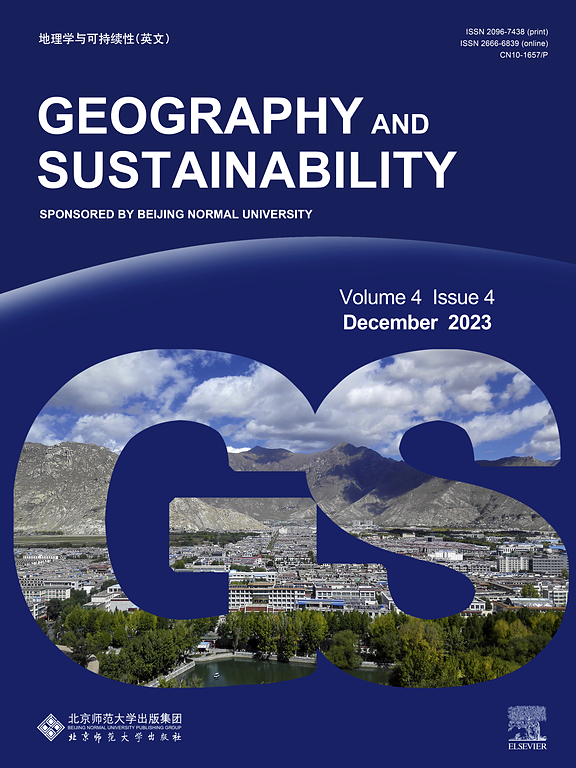Effect of food value-chain connections on land-use change
IF 8
1区 环境科学与生态学
Q1 GEOGRAPHY, PHYSICAL
引用次数: 0
Abstract
Changes in food production, often driven by distant demand, have a significant influence on sustainable management and use of land and water, and are in turn a driving factor of biodiversity change. While the connection between land use and demand through value chains is increasingly understood, there is no comprehensive conceptualisation of this relationship. To address this gap, we propose a conceptual framework and use it as a basis for a systematic review to characterise value-chain connection and explore its influence on land-use and -cover change. Our search in June 2022 on Web of Science and Scopus yielded 198 documents, describing studies completed after the year 2000 that provide information on both value-chain connection and land-use or -cover change. In total, we used 531 distinct cases to assess how frequently particular types of land-use or -cover change and value-chain connections co-occurred, and synthesized findings on their relations. Our findings confirm that 1) market integration is associated with intensification; 2) land managers with environmental standards more frequently adopt environmentally friendly practices; 3) physical and value-chain distances to consumers play a crucial role, with shorter distances associated with environmentally friendly practices and global chains linked to intensification and expansion. Incorporating these characteristics in existing theories of land-system change, would significantly advance understanding of land managers’ decision-making, ultimately guiding more environmentally responsible production systems and contributing to global sustainability goals.

求助全文
约1分钟内获得全文
求助全文
来源期刊

Geography and Sustainability
Social Sciences-Geography, Planning and Development
CiteScore
16.70
自引率
3.10%
发文量
32
审稿时长
41 days
期刊介绍:
Geography and Sustainability serves as a central hub for interdisciplinary research and education aimed at promoting sustainable development from an integrated geography perspective. By bridging natural and human sciences, the journal fosters broader analysis and innovative thinking on global and regional sustainability issues.
Geography and Sustainability welcomes original, high-quality research articles, review articles, short communications, technical comments, perspective articles and editorials on the following themes:
Geographical Processes: Interactions with and between water, soil, atmosphere and the biosphere and their spatio-temporal variations;
Human-Environmental Systems: Interactions between humans and the environment, resilience of socio-ecological systems and vulnerability;
Ecosystem Services and Human Wellbeing: Ecosystem structure, processes, services and their linkages with human wellbeing;
Sustainable Development: Theory, practice and critical challenges in sustainable development.
 求助内容:
求助内容: 应助结果提醒方式:
应助结果提醒方式:


